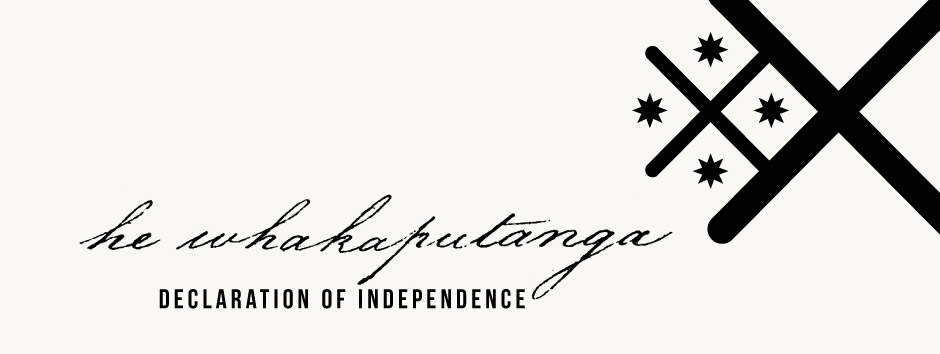Signing details
Makoare Te Taonui was the son of Hautai and the grandson of Te Aokaitū. He was the younger brother of Muriwai, a highly regarded rangatira of Te Popoto, whom he succeeded after his death in early 1828. He had at least two wives, Katuku, and Hinuata of Ngāti Rēhia. With Hinuata he had Tautoru, later known as Āperahama Taonui. In some accounts Te Taonui is said to have been the son-in-law of Wharemaru.
Te Taonui engaged early with the Pākehā world. The missionary Samuel Marsden met him at Utakura in September 1819 and pronounced him 'a very well informed man,' while a trader later noted he was 'a chief of considerable influence, and an extensive dealer in spars and timber.' [1] When Marsden returned in March 1820 Te Taonui accompanied him aboard the HMS Dromedary. He also visited Sydney, possibly working his passage on the brig Governor Macquarie. His baptismal name, Makoare, is a transliteration of Macquarie.
In 1831 Te Taonui was one of 13 rangatira to sign a letter addressed to King William IV. One historian has suggested that ‘Taunui’ may have been Wiremu Ieti Taunui. However, most accounts believe the signatory to be Te Taonui, as the signatory was recorded as living at Utakura.
Te Taonui was also involved in the selection of Te Kara, the United Tribes’ flag. Because New Zealand was not subject to British or European authority, ships built here were not registered and could not freely enter international ports. In November 1830 Te Taonui was aboard one of these New Zealand-built ships, the Sir George Murray, when it was seized by Port Jackson Customs. It is said he flew up a Māori cloak to show where the ship was from, without success. This led to the selection of a flag for New Zealand ships at Waitangi on 20 March 1834.
Te Taonui’s timber interests, coupled with his flax mill and general store, would have been one reason for signing He Whakaputanga on 16 January 1838. By signing a declaration that ensured foreigners in New Zealand would know who governed the country, he ensured these interests would be protected.
He also signed Te Tiriti o Waitangi on 12 February 1840 at Mangungu, despite having spoken strongly against it: 'We are not… willing to give up our land. It is from the earth we obtain all things. The land is our Father; the land is our chieftainship; we will not give it up.' And later in the debate: 'First your Queen sends Missionaries to New Zealand to put things in order, gives them £200 a year. Then she sends Mr. Busby to put up a flag, and gives him £500 a year, and £200 to give to us natives. Now she sends a Governor.' 'Speak your own sentiments, not what bad men have told you,' retorted William Hobson. 'I do,' replied Te Taonui. 'I know Governors have salaries.' [2] Later, after a confrontation between Governor Hobson and Hokianga trader Frederick Maning, Te Taonui softened his stance.
During the 1845–46 Northern Wars, Te Taonui allied with the British Crown and others against the forces of Hōne Heke Pōkai, Te Ruki Kawiti and their supporters. He was prominent in the battle of Te Ahuahu, as well as other engagements.
Te Taonui died in September 1862 and is buried at the Williams Memorial Church in Paihia.
[1] John Rawson Elder (ed.), The Letters and Journals of Samuel Marsden, 1765–1838, Senior Chaplain in the Colony of New South Wales and Superintendent of the Mission of the Church Missionary Society in New Zealand, Coulls, Somerville, Wilkie and A. H. Reed for the Otago University Council, Dunedin, 1932, p.184; Samuel McDonald Martin, New Zealand in a Series of Letters: Containing an Account of the Country, Both Before and Since its Occupation by the British Government: With Historical Remarks on the Conduct of the Government, the New Zealand and the Manakau Companies: Also a Description of the Various Settlements, the Character of the Aborigines, and the Natural Productions of the Country, Simmons & Ward, London, 1848, p.29.
[2] J. S. Buick, The Treaty of Waitangi: How New Zealand Became a British Colony, Thomas Avery & Sons, New Plymouth, 1936, p.170-71.


Community contributions